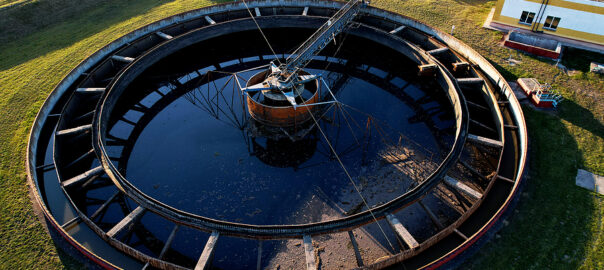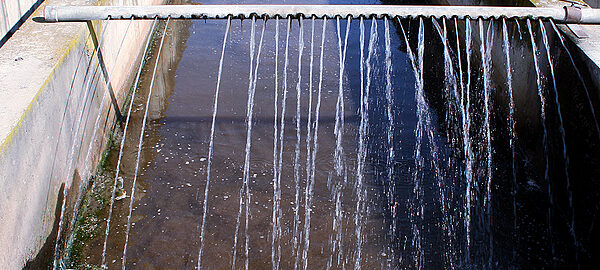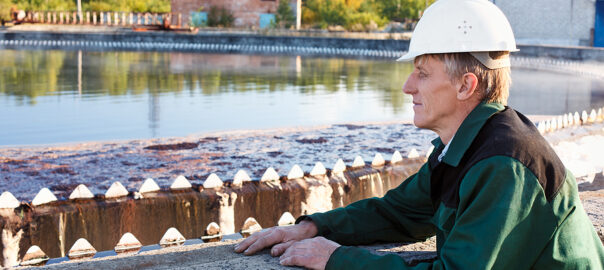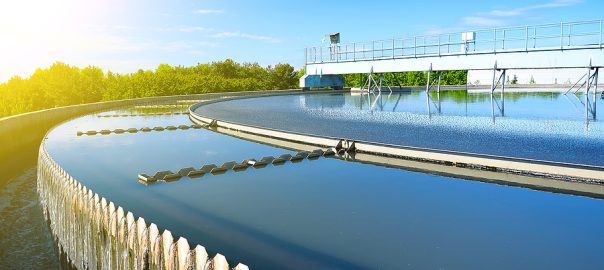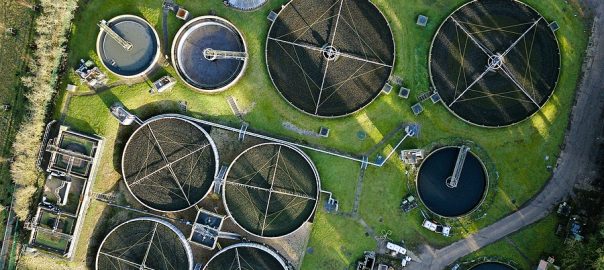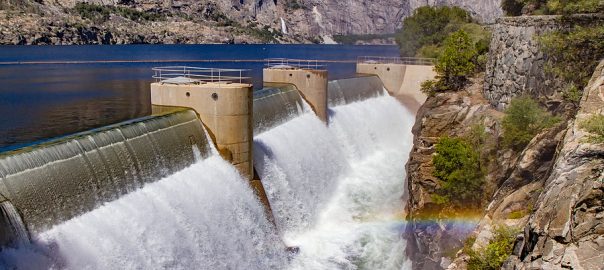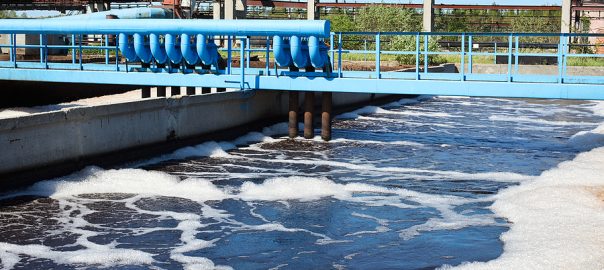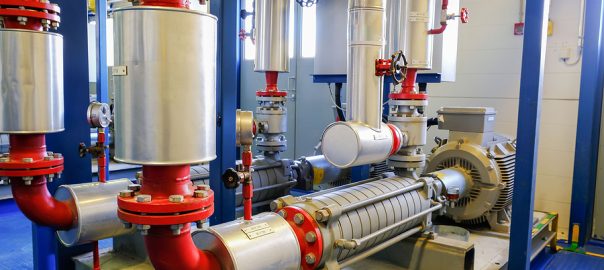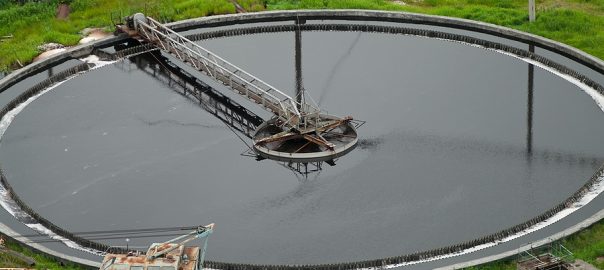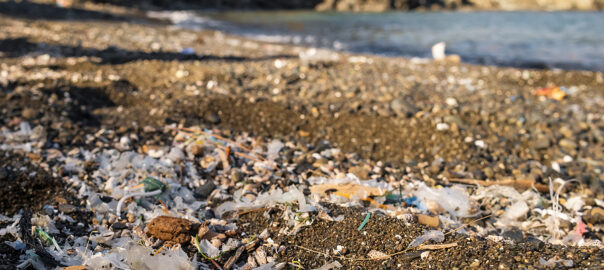
When we talk about plastic pollution, the image is typically of landfills overflowing with plastics or harmful plastic bottles and bags floating in the ocean. This represents the tangible type of plastic pollution that we can see. However, there is an entire world of plastic pollution that exists beyond what we can touch or see. This is the world of microplastic pollution, which are minuscule plastic pieces that find their way into our water systems, and environment. The microplastic problem is substantial, but microplastic filtration in wastewater treatment is one way we can begin to tackle it.
What Is Microplastic Pollution?
Microplastics are just as they sound – small bits of plastic, usually smaller than a single grain of rice, that come from various sources. There are some types of microplastics that appear to be pollution in their whole form. An example of this is the small microbeads that are popular in facial and body scrubs. These are an especially big problem for pollution due to how they are washed down drains when they are used. Eventually, they flow into wastewater treatment plants.
Other sources of microplastics are called secondary microplastics. These are formed by the degradation of larger plastic items. For example, a plastic shopping bag that has shredded or torn, leaving small pieces of plastic behind. Secondary plastics can also easily make their way down drains and sewage systems, eventually landing in wastewater treatment plants.
If microplastics make it past wastewater treatment plants, they can more easily end up in rivers, and oceans, and eventually into our food chains and bodies. Wastewater treatment plants play an important role in managing microplastic pollution.
The Role of Wastewater Treatment Plants in Microplastic Pollution
We like to think of wastewater treatment plants as the guardians of our water quality. On both small and large scales, these facilities process a vast amount of debris and pollutants in the water. This includes a mixture of physical, biological, and chemical pollutants, including microplastics.
Wastewater treatment facilities are designed to capture pollutants and impurities while using different purification methods based on the type of pollutant. For larger debris, such as sticks, leaves, and other organic debris, equipment such as trash rakes are highly effective. However, microplastics pose different challenges due to their small nature. Systems designed to capture larger debris aren’t always efficient at filtering out microplastics.
We’re at a critical point when it comes to removing microplastics from our waters. It’s estimated that by the year 2050, the amount of plastic in the sea will likely outweigh the fish. Addressing microplastic pollution at wastewater treatment facilities is one of the most important steps for reducing the impact of microplastics in our local and global water sources.
Current Methods for Microplastic Filtration in Wastewater Treatment
The type of filtration used depends on the type of microplastics and their source. There are a few ways that wastewater treatment facilities can tackle the microplastic problem.
The first is through primary treatment. This is used for pieces of plastic debris that can be filtered out with screens and similar types of equipment. Primary treatment is effective at capturing larger pieces of plastic debris and microplastics that are at least a few millimeters in size. Primary treatment isn’t as efficient for capturing smaller microplastics.
Biological treatments can be used to target the smaller particles. This type of treatment helps capture plastics using attached or suspended growth systems. After this stage, the final step is the chemical treatment, which helps to disinfect and filter microparticles from the water.
Challenges in Microplastic Filtration
One of the biggest challenges in microplastic filtration is detection. Microplastics come from so many different sources, that detecting their presence isn’t a straightforward process. Relatively larger microplastics are captured with rakes and screens, but smaller particles are much more difficult to detect and filter. Unfortunately, it’s these smaller particles that often pose a more significant threat to the integrity of water sources and wildlife.
Cost and infrastructure present additional challenges. The industry is evolving to the point where technology is making it possible to detect and remove smaller microplastic particles. However, retrofitting wastewater treatment centers with new equipment is expensive. The ability of the industry to tackle microplastic pollution is heavily reliant on the ability of individual treatment centers to adapt and absorb the costs.
Secondary pollution is also an issue. During the filtration process, some microplastics may end up in organic waste that has been filtered from wastewater. Sometimes, this waste is used for fertilizer or recycled in other ways. If microplastics are present in this waste, there is a higher chance of them leaking back into the environment.
Benefits of Effective Microplastic Filtration in Wastewater Treatment
The benefits of wastewater treatment facilities being able to effectively filter microplastics are extensive. Microplastics are a growing issue, both for our personal and environmental health. The first step is for each of us as individuals to reduce the amount of microplastics that enter water systems. However, it’s wastewater treatment facilities that serve as the true heroes.
When microplastic pollution is addressed at wastewater treatment facilities, all of us are able to benefit from the results.
Cleaner Environment: The more efficient we become at filtering microplastics, the better able we are to prevent them from entering water sources like rivers and oceans. This not only preserves the quality of these water sources, but also protects the fish, birds, and other wildlife that either live in or consume water from these sources.
Benefits for Health: Microplastics are almost impossible to avoid. Research has determined that microplastics can be found in the human body, including the lungs, blood, breast milk, and placental tissues of expectant mothers. The continual exposure from so many sources can pose a risk to health. While microplastic filtration won’t solve this problem entirely, it does help to eliminate large amounts of microplastics from the water we are exposed to and consume.
Improved Clean Water Standards: As wastewater treatment plants become more capable and efficient at removing microplastics, we’re able to advocate more strongly for better filtration standards. Water treatment facilities are in a position to be the leaders in advocating for improved benchmarks for water purity.
Future Innovations and Research in Microplastic Filtration
Today, it’s more important than ever that we’re looking toward the future for innovations in microplastic filtration. We’re seeing some promising new tools on the horizon.
An example of this innovation is advanced membrane filters that are capable of filtering microplastic particles more efficiently. Biofiltration, using biological methods to trap and remove minuscule microplastics is another area being explored. There are even some scientists looking at how we can break down and degrade microplastics using electrochemical treatments.
Technology and tools aside, microplastic pollution is an issue that needs to be addressed on a global scale. Countries around the world are beginning to work together, set stronger regulations, and develop collaborative practices for the research and development of microplastic filtration solutions.
Solving the Complex Problem of Microplastics with Wastewater Filtration
There’s no question that microplastic pollution is one of the most challenging and complex problems the wastewater treatment industry faces today. These facilities play an incredibly important role in preventing this problem from getting worse. Microplastic pollution is an issue that needs to be tackled on every level, from the role of the individual to the responsibilities of the manufacturing industry, and beyond. Wastewater treatment is one tool that can make a real impact right now.
At Lakeside Equipment, we’re here to help businesses with wastewater treatment facilities access the most innovative and effective equipment. We encourage anyone with questions about wastewater treatment to contact us. We’re happy to answer your questions and help you find the best wastewater filtration system for your needs.

